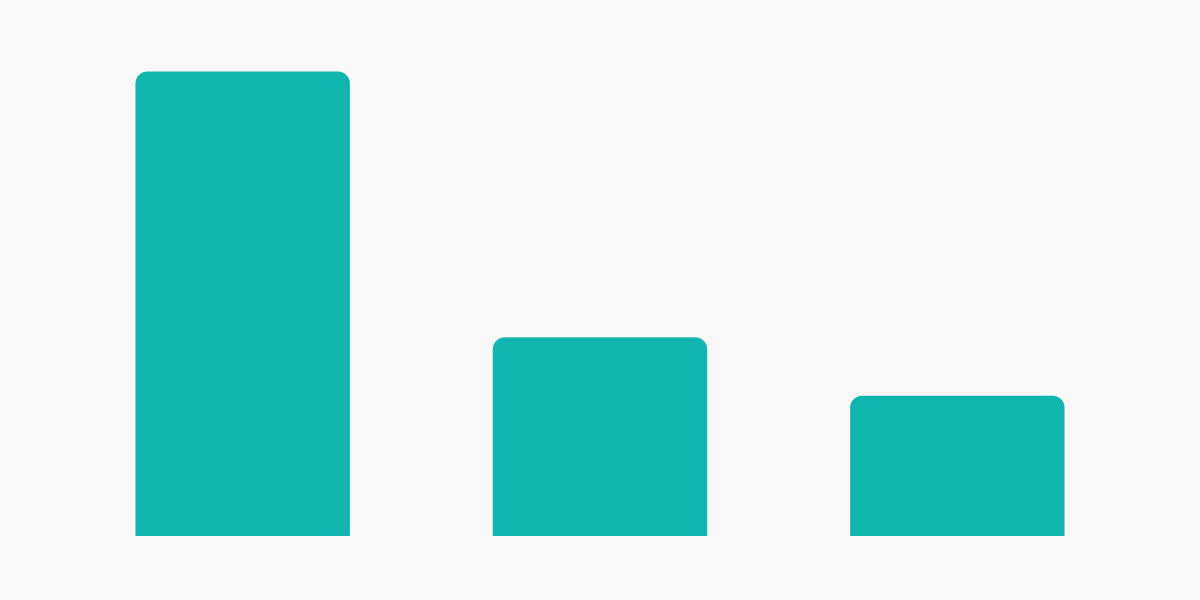-
Notifications
You must be signed in to change notification settings - Fork 16
BlogPost
Data visualizations are a versatile tool that empower us to digest data in a way that nothing else can. Well-executed data visualizations can enhance the experience and engagement of your app by helping your users connect with the data and draw actionable insights. Unfortunately, implementing an effective visualization in web development is far from trivial.
The most prolific charting library in web is D3.js created by Mike Bostock. It is an incredibly powerful library but, it is also low-level. Working with D3.js is involved and requires the developer to have some understanding of the grammar of graphics. D3.js is also unopinionated and open ended so implementing an effective chart requires the developer to understand charting best practices.
There are many higher-level libraries (most of which are powered by D3.js) that abstract out some of the complexities mentioned above. Some of the popular ones are Chart.js, Highcharts, Recharts and Vega. These are great libraries that greatly simplify the chart building process.
For Adobe Analytics, we found Vega to be a good balance of abstraction and control. However, developing a production-ready visualization typically required between 500 and 1500 lines of code. These visualizations were also not very portable and still required the developer to understand the grammar of graphics and visualization best practices. No one on the team wanted to touch the visualization code after it was released.
To solve these issues, we decided to build our own visualization library that would be the ideal balance of simplicity and configurability.
- React
- Works with react
- API is declarative and uses JSX
- Spectrum
- Charts align with Adobe’s Spectrum design system
- The Spectrum design system is informed by thorough research and is focused on optimal experiences for all users
- Intuitive
- Accessible
- International
- Charts
- Stunning and compelling visualizations that are easy to implement
The primary focus of React Spectrum Charts is a clean and simple, declarative API. Complex visualization concepts and terms have been abstracted out.
The API reads like how you would explain the chart to someone. For example, let’s say that you would like a Bar Chart that plots the number of users (users in your data) by operating system (operatingSystem in your data). The code for this in React Spectrum Charts would be as follows:
<Chart data={data}>
<Bar dimension="users" metric="operatingSystem" />
</Chart>

This is a great start but, let's say you would also like x and y axes on the chart. Simply add a couple and axis components:
<Chart data={data}>
<Axis position="left" title="Users" />
<Axis position="bottom" title="Operating System" />
<Bar dimension="users" metric="operatingSystem" />
</Chart>

In the above example, there was no need to setup scales, calculate bandwidths or position text. All of that is handled by the library so that you don't have to. This does not mean that you have lost all control or that the library can only handle simple visualizations. Adobe Product Analytics uses React Spectrum Charts for all of it's visualizations, many of which are highly advanced (check out the examples section of our stroybook).
We think through every aspect of the API thoroughly to give you just the right amount of control you need while not requiring you to configure things you don't need.
A well-executed data visualization looks deceptively simple. Decades of research across the data visualization community have gone into figuring out the most effective ways to tell stories with data using visualizations. React Spectrum Charts is built on the foundation of this research and best practices. This means you can use the library with confidence that you are delivering an optimal data visualization experience to your users.
We started out by building the most common chart types and fundamental chart building blocks.
- Area
- Bar
- Donut (Pie)
- Line
- Scatter
- Annotation
- Axis
- Legend
- Popover
- Title
- Tooltip
- Trendline
This is just the starting point, and we are regularly adding more components and features.
React Spectrum Charts is open source and ready for you to use! You can use our codesandbox template to try out the library now. Check out our documentation and our storybook to learn more.
We are excited to see what you build with React Spectrum Charts!
- React Spectrum Charts Github – https://github.com/adobe/react-spectrum-charts
- React Spectrum Charts Documentation – https://github.com/adobe/react-spectrum-charts/wiki
- React Spectrum Charts Storybook – https://opensource.adobe.com/react-spectrum-charts
- React Spectrum Charts Codesandbox Template – https://codesandbox.io/p/sandbox/ts-react-spectrum-charts-dgrd62
- Spectrum Design Website - https://spectrum.adobe.com/
@adobe/react-spectrum-charts - Adobe 2024
Chart Components
Supplemental Chart Components
Layout Components